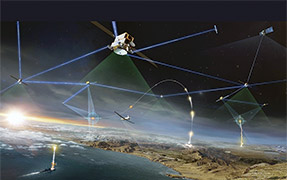4D imaging to quantify lung disease
Functional imaging with modern computed tomography (CT) technology has the potential to be a practical and widely-available method for investigating the pathophysiological basis of lung disease. Perfusion-CT protocols using multi-slice techniques can perform repeated volumetric scans with high temporal resolution. Combined with a CT contrast agent such as an iodinated tracer material, these 4D CT images (3D volumetric scans plus the time domain of perfusion-CT) dynamically record the contrast enhancement changes within the lung, mapping the tracer exchange between the micro-vascular space and lung tissue1.
The technique can provide estimates of gross tissue physiologic parameters such as perfusion, capillary permeability, fractional intravascular blood volume, and tissue interstitial volumes2. This is made possible by monitoring the transit of the contrast material in vivo and modeling time-density curves for the tracer in a region of interest (ROI). However, as in many previous studies, low sampling rates and few scanning time points limit the accuracy of functional analysis.
A new dynamic perfusion-CT imaging protocol, developed at UCLA, was evaluated in an animal model to investigate its ability to quantify perfusion parameters from 4D CT image data and to perform functional analysis. Two Yorkshire swine were used as the test subjects. Technical parameters for each acquisition were 120kVp and 50mA (effective). Slice thickness was 2.4mm, and 12 slices were acquired. A standard reconstruction filter without high spatial frequency enhancement was used, and all measurements were made on a motion-free table.

The bolus injection rate was 1ml/kg. Images were acquired at 25 time points starting with a baseline measurement prior to injection of the contrast agent, followed by a high sampling rate of 1 image per second over 10 seconds (15–25 seconds post injection). Images were then collected at the rate of 1 per 4 seconds in two clusters (acquisitions 13–20) followed by 4 images at 1 minute intervals and a final image 10 minutes after administering the contrast agent (see Figure 1). Each acquisition used a relatively low dose technique to maintain the overall radiation dose at acceptable levels.
Autologous clotted blood was used as the source of emboli. After injection of the embolus, a small area of the lower lobe was scanned using the above protocol. All scans were performed using suspended-end-inspiration CT. Two radiologists visually inspected the images for small emboli with peripheral regions that showed relatively poor profusion. Those with neighboring regions demonstrating good contrast enhancement were marked as ROIs.
We used the software tools developed by Brown et al.3 to compare quantitative perfusion parameters from poor perfusion ROIs and high contrast ROIs on both voxel (3D pixel) and ROI-wide levels. Differences between perfusion/permeability color maps of the regions were also evaluated for use in functional analyses (data not presented). The dynamic contrast enhancement curves from both subjects capture the real contrast enhancement peak at the washing-in phase (see Figure 2).

A lung perfusion/permeability map and lung blood-flow map were generated on a voxel level. Functional parameters calculated by software show a clear difference between poor and high perfusion zones. In both cases, higher wash-in and wash-out enhancement, 83.7±48.1 Hounsfield units (HU) and 56.2±44.5HU, respectively, were observed for the high perfusion zones compared to the low perfusion zones.
Increasing the CT temporal sampling rate, especially in the early period after contrast bolus injection, makes the task of quantifying lung perfusion using 4D CT imaging feasible. The radiation dose of the new protocol is at levels comparable to a nodule densitometry study and would be acceptable for implementation on human subjects in the near future. Thus, the techniques employed in this study have a potential application in the investigation of human lung diseases, particularly through functional analyses of the effects of pulmonary embolisms.
Yang Wang received his M.S. Degree in biomedical physics from the School of Medicine, UCLA. He is interested in the application of computer aided design to the detection and treatment of early-stage lung cancer. Currently his research includes differentiating solitary pulmonary nodules and evaluating treatment-response by dynamic perfusion-CT.
Jonathan Goldin is professor of clinical radiology, chief, clinical vice chair at UCLA Santa Monica. He is involved in translational research in quantitative image analysis, focusing on cardiothoracic applications.
Fereidoun Abtin is a radiologist and research fellow in the Department of Radiology, UCLA.
Matthew Brown is an associate professor and research scientist in the Department of Radiology, UCLA. His research interests include computer vision and computer-aided diagnosis.
Michael McNitt-Gray is a professor-in-residence and research scientist in the Department of Radiology, UCLA. His research interests include medical image processing and CT physics.



